Comments / Questions (122)
![]() Simone wrote:
Simone wrote:
Hvordan er det meningen, at man skal tage pænt ud i A4 under ærmet? Når maskerne ligger ret, vrang, ret, vrang i bredden og man tager ud mellem første maske og de næste, kommer de jo pludselig til at ligge for mange eller for få ret og vrang i højden? Eller overser jeg noget?
07.12.2024 - 09:34DROPS Design answered:
Hei Simone. Før man har et maskeantall der A.4 går opp, vil man få 2 rett / 2 vrange etter hverandre. Så perlestrikken vil ikke stemme 100% hele veien. mvh DROPS Design
10.12.2024 - 08:46
![]() Elizabeth wrote:
Elizabeth wrote:
I am about to start the neck section but I don't understand the instructions. I am knitting the XXL size. Do the 46 stitches on a thread include the 32 stitches (22 after decreasing)? When you are working back and forth is this on all the stitches except for the 46 on a thread? Kind regards, Elizabeth
28.11.2024 - 04:43DROPS Design answered:
Hi Elizabeth, 46 stitches on a thread include 22 stitches (after decreasing) and 12 stitches from each side. Happy knitting!
28.11.2024 - 09:41
![]() Ulla Ronkainen wrote:
Ulla Ronkainen wrote:
Hei, ohjeesta puuttuu kokonaan helman resorin mitta - on ilmeisesti sama, kuin hihoissa :) Tämä menee nyt puikoille - ihana malli!
26.11.2024 - 09:55DROPS Design answered:
Hei, helman joustinneuleen pituus on 5 cm, eli sama kuin hihoissa.
26.11.2024 - 17:52
![]() Terri Van Ochten wrote:
Terri Van Ochten wrote:
Is there a way to get this pattern without trying to figure it out by the charts? I’m trying to make this pattern my son picked out but I’m having trouble working from the charts.
18.11.2024 - 20:32DROPS Design answered:
Dear Mrs Van Ochten, we only have diagrams to this pattern, maybe this lesson can help you understanding how to read/work diagrams. Happy knitting!
19.11.2024 - 07:54
![]() Ewa wrote:
Ewa wrote:
Czy na ściągacz u dołu nie można po prostu nabrać odpowiednio 238-254-270-310-326-350 oczek i przerobić 5 cm 2 x 2? Nie rozumiem jaki jest sens zmniejszania liczby oczek w ściągaczu...
10.11.2024 - 18:54DROPS Design answered:
Witaj Ewo, dzięki temu zabiegowi szerokość ściągacza będzie taka sama jak szerokość swetra. Jeśli nabierzesz mniej oczek na ściągacz, to ściągnie on sweter na dole i będzie miał on kształt takiej bombki (dawniej tak projektowano swetry). Ale wszystko oczywiście zależy jaki efekt chcesz uzyskać, wybór należy co Ciebie :) Pozdrawiamy!
11.11.2024 - 18:23
![]() Anne Marie Fanjat wrote:
Anne Marie Fanjat wrote:
Bonjour arrivé au raglan ,j'ai 420 mailles et pouvez vous être plus clair sur les diminutions car je n'arrive pas à la fin à 104 mailles!!!! Merci infiniment
30.10.2024 - 07:05DROPS Design answered:
Bonjour Mme Franjat, vous allez diminuer pour le raglan 27 x tous les 2 tours + 7 x tous les tours soit 34 fois 8 mailles = 272 mailles au total, en même temps, vous diminuez pour l'encolure 6 mailles et vous mettez en attente les 32 mailles centrales puis vous rabattez de chaque côté pour l'encolure: 1 x 2 m + 1 x 1 m soit 3 m de chaque côté (6 au total); on va donc avoir: 420-272-6-32-6=104 mailles. Bon tricot!
30.10.2024 - 08:46
![]() Nasri Aïcha wrote:
Nasri Aïcha wrote:
Peut on adapter le modèle,en le tricotant de haut en bas,؟
27.10.2024 - 16:41DROPS Design answered:
Bonjour Mme Nasri, probablement - vous trouverez ici les modèles homme tricotés de haut en bas - l'un d'eux pourra peut-être vous inspirer. Bon tricot!
28.10.2024 - 09:39
![]() Mitch wrote:
Mitch wrote:
Ifinished knitting up to the neck size M. I have 104 st on needles and 32 on holder. I am to knit up 142 around the neck. That leaves only 6 st total (3 on each side) to pick up along both sides of the front of the neck along the 5 cm after leaving the sts on the holder. It's not enough to cover that 5cm section on each side. Do I just add more stitches?
11.10.2024 - 04:21DROPS Design answered:
Dear Mitch, just try to pick up as many stitches as possible then adjust to 108 sts on first round before working rib. Happy knitting!
11.10.2024 - 15:53
![]() Missy wrote:
Missy wrote:
Hi there. I’m new to this site and these patterns and I’m battling to understand how we work on the wrong side according to the diagrams specifically when there is a cable involved. Do we simply knit in place of a purl on the wrong side and vice versa? Or is it more complex? Thank you
29.09.2024 - 22:19DROPS Design answered:
Dear Missy, as long as you work in the round, just work all stitches as shown in diagram, ie either K (white square) or P (cross) (+ cables of course), then when casting off stitches for neck, you will work from WS as explained under diagram text: purl the white squares and knit the crosses from wrong side. Happy knitting!
30.09.2024 - 10:16
![]() Sylvette CHANGEY wrote:
Sylvette CHANGEY wrote:
Hello! What a wondeful sweater! Is it possible to have the explanations in French, please? Thank you!
07.09.2024 - 16:29DROPS Design answered:
Dear Sylvette, you can select the language in the bar after the materials section, next to the print and comments buttons. Here you have the French version: https://www.garnstudio.com/pattern.php?id=10408&cid=8. Happy knitting!
08.09.2024 - 19:26
Ice Island#iceislandsweater |
|||||||||||||||||||||||||||||||
 |
 |
||||||||||||||||||||||||||||||
Knitted jumper for men in DROPS Karisma. The piece is worked with raglan, cables and double neck. Sizes S - XXXL.
DROPS 224-10 |
|||||||||||||||||||||||||||||||
|
------------------------------------------------------- EXPLANATIONS FOR THE PATTERN: ------------------------------------------------------- KNITTING TIP: In sizes XL, XXL and XXXL, there will be 4 purl stitches next to each other when A.1 is worked 2 times in width. So the rib will match under A.5/A.8, which is worked after the rib. PATTERN: See diagrams A.1 to A.10. The diagrams show all rows in the pattern from the right side. DECREASE/INCREASE TIP (evenly spaced): To work out how to decrease/increase evenly, count the number of stitches to be decreased/increased over (e.g. 23 stitches), and divide by the number of decreases/increases to be made (e.g. 6) = 3.8. In this example, decrease by knitting together approx. each 3rd and 4th stitch. When increasing, make 1 yarn over after approx. each 4th stitch. On the next round work the yarn overs twisted to avoid holes. INCREASE TIP (sleeves): Increase 2 stitches under the sleeve by making 1 yarn over on each side of the marker-stitch as follows: Work the marker-stitch (always the first stitch in A.4), 1 yarn over, pattern as far as the marker-stitch, 1 yarn over (= 2 stitches increased). On the next round work the yarn overs twisted to avoid holes. Then work the new stitches into A.9/A.10 until you have room for a complete repeat, then work the stitches in A.4. RAGLAN: Decrease to raglan on each side of the marker, in each transition between body and sleeves as follows. FROM RIGHT SIDE: AFTER THE MARKER: Knit 1, slip 1 stitch as if to knit, knit 1 and pass the slipped stitch over the knitted stitch (= 1 stitch decreased) BEFORE THE MARKER: Work until there are 3 stitches left before the marker, knit 2 together, knit 1 (= 1 stitch decreased). FROM WRONG SIDE: AFTER THE MARKER: Purl 1, purl 2 together (= 1 stitch decreased) BEFORE THE MARKER: Work until there are 3 stitches left before the marker, purl 2 twisted together, purl 1 (= 1 stitch decreased). ------------------------------------------------------- START THE PIECE HERE: ------------------------------------------------------- JUMPER – SHORT OVERVIEW OF THE PIECE: The body is worked in the round with circular needle as far as the armholes. The sleeves are worked in the round with double pointed needles/short circular needle, bottom up. The body and sleeves are placed on the same circular needle and the yoke worked, decreasing to raglan at the same time. Stiches are cast off for the neck mid-front and the piece continued back and forth. The neck is worked to finish. BODY: Cast on 272-288-304-344-360-392 stitches with circular needle size 3.5 mm and DROPS Karisma. Knit 1 round. Then work the following rib: Purl 1, knit 2, * purl 2, knit 2 *, work from *-* over the next 20-24-28-24-28-36 stitches, work A.1 over the next 14-14-14-28-28-28 stitches (= 1-1-1-2-2-2 repeats of 14 stitches – read KNITTING TIP), A.2 (= 18 stitches), A.3 (= 26 stitches), A.2, A.1 over the next 14-14-14-28-28-28 stitches (= 1-1-1-2-2-2 repeats of 14 stitches – read KNITTING TIP), * knit 2, purl 2 *, work from *-* over the next 44-52-60-52-60-76 stitches, knit 2, A.1 over the next 14-14-14-28-28-28 stitches – remember KNITTING TIP, A.2, A.3, A.2, A.1 over the next 14-14-14-28-28-28 stitches – remember KNITTING TIP, * knit 2, purl 2 *, work from *-* over the next 20-24-28-24-28-36 stitches, knit 2 and purl 1. Continue this rib – NOTE: In diagrams A.2 and A.3 repeat the first 2 rounds onwards. When 1 round remains before the piece measures 5 cm, decrease stitches as follows: Work stocking stitch over the first 23-27-31-27-31-39 stitches and decrease 6-6-6-6-6-8 stitches evenly over these stitches – read DECREASE/INCREASE TIP, work A.1 as before over the next 14-14-14-28-28-28 stitches, work the last round in A.2 (= 18 stitches, 1 stitch decreased), work the last round in A.3 (= 26 stitches, 2 stitches decreased), work the last round in A.2 (= 18 stitches, 1 stitch decreased), A.1 as before over the next 14-14-14-28-28-28 stitches, work stocking stitch over the next 46-54-62-54-62-78 stitches and decrease 13-13-13-13-13-17 stitches evenly over these stitches, A.1 as before over the next 14-14-14-28-28-28 stitches, work the last round in A.2 (= 18 stitches, 1 stitch decreased), work the last round in A.3 (= 26 stitches, 2 stitches decreased), work the last round in A.2 (= 18 stitches, 1 stitch decreased), A.1 as before over the next 14-14-14-28-28-28 stitches, work stocking stitch over the last 23-27-31-27-31-39 stitches and decrease 7-7-7-7-7-9 stitches evenly over these stitches = 238-254-270-310-326-350 stitches. The rib is now finished. Insert 1 marker in the first stitch and 1 marker in the 120th-128th-136th-156th-164th-176th stitch (= sides). Allow these markers to follow your work onwards; they are used when casting off for the armholes. Change to circular needle size 4.5 mm. Work the next round as follows: A.4 over the first 17-21-25-21-25-31 stitches, A.5 over the next 14-14-14-28-28-28 stitches (= 1-1-1-2-2-2 repeats of 14 stitches), A.6 (= 17 stitches), A.7 (= 24 stitches), A.6, A.8 over the next 14-14-14-28-28-28 stitches (= 1-1-1-2-2-2 repeats of 14 stitches), A.4 over the next 33-41-49-41-49-61 stitches (marker sits in the middle of these stitches), A.5 over the next 14-14-14-28-28-28 stitches, A.6, A.7, A.6, A.8 over the next 14-14-14-28-28-28 stitches and A.4 over the last 16-20-24-20-24-30 stitches. Continue this pattern. REMEMBER THE KNITTING TENSION! When the piece measures 36 cm in all sizes, cast off for the armholes as described below. There is approx. 26-28-30-32-34-36 cm left to finished length. Adjust so that next round is an odd numbered row in the diagrams, and cast off the first 6-6-7-7-8-8 stitches, continue the pattern until there are 5-5-6-6-7-7 stitches left before the second marker-stitch, cast off 11-11-13-13-15-15 stitches, work until there are 5-5-6-6-7-7 stitches left on the round and cast off 5-5-6-6-7-7 stitches = 108-116-122-142-148-160 stitches on the front piece and 108-116-122-142-148-160 stitches on the back piece. Cut the strand. Lay the piece to one side and work the sleeves. SLEEVES: Cast on 56-60-60-64-64-68 stitches with double pointed needles size 3.5 mm and DROPS Karisma. Knit 1 round, then work rib in the round (knit 2, purl 2) for 5 cm. Knit 1 round where you increase 19-15-15-19-19-15 stitches evenly spaced – remember DECREASE/INCREASE TIP = 75-75-75-83-83-83 stitches. Insert 1 marker in the first stitch – allow the marker to follow your work onwards; it is used when increasing under the sleeve. Change to double pointed needles size 4.5 mm. Work the next round with pattern as follows: A.4 over the first stitch (marker-stitch), A.9 (= 8-8-8-12-12-12 stitches – start the diagram by the mark for your size and work from right to left), A.6 (= 17 stitches), A.7 (= 24 stitches), A.6, A.10 (= 8-8-8-12-12-12 stitches – start at the first stitch in A.10 and work from right to left as far as the mark for your size). Continue this pattern. When the piece measures 8-10-7-8-9-6 cm, increase 2 stitches under the sleeve – read INCREASE TIP. Increase like this every 4-2½-2½-2½-2-2 cm a total of 11-15-17-15-17-19 times = 97-105-109-113-117-121 stitches – NOTE: The increased stitches are first worked in A.9/A.10 until there is room for a complete repeat, then worked in A.4. Continue working until the sleeve measures approx. 51-49-48-46-45-43 cm (shorter measurements in larger sizes due to wider neck and longer yoke). Try the sleeve on and work to desired length. Adjust so that the next round is an odd numbered row in the diagrams and cast off for the armhole as follows: Cast off the first 6-6-7-7-8-8 stitches, work as before until there are 5-5-6-6-7-7 stitches left and cast off the last 5-5-6-6-7-7 stitches = 86-94-96-100-102-106 stitches. Cut the strand. Work the other sleeve in the same way. YOKE: Place the sleeves on the same circular needle size 4.5 mm as the body, where stitches were cast off for the armholes (without working the stitches) = 388-420-436-484-500-532 stitches. Insert a marker thread in each transition between the body and sleeves = 4 marker threads. Allow the threads to follow your work onwards; they are used when decreasing to raglan. Start at the transition between the back piece and the left sleeve – you can insert a marker here to show the start of the round. Continue the pattern as before, with 2 stitches in stocking stitch on each side of all 4 marker threads. OVERVIEW OF THE NEXT SECTION: On the next round start to decrease to raglan; you will also cast off stitches for the neck mid-front and finish working back and forth from mid-front. When there are not enough stitches for the cables, work stocking stitch over these stitches. Read RAGLAN and NECK before continuing. RAGLAN: Decrease to RAGLAN on each side of all 4 marker threads – read description above. Decrease every 2nd round a total of 24-27-30-32-36-38 times, then every round 7-7-6-7-4-4 times. NECK: When the piece measures 55-57-59-60-62-64 cm (adjust so the next round is an odd round in the diagrams), decrease 6-6-6-10-10-10 stitches evenly over the middle 24-24-24-32-32-32 in front – remember DECREASE/INCREASE TIP. Then place the middle 30-32-34-42-46-54 stitches on a thread for the neck. Work to the beginning of the round. Cut the strand. Start from the wrong side, by the neck and continue the pattern back and forth. AT THE SAME TIME cast off at the beginning of each row from the neck as follows: 2 stitches 1 time and 1 stitch 1-1-1-2-2-2 times on each side. After all the decreases to raglan and neck there are 98-104-102-112-116-124 stitches on the needle. Cut the strand. DOUBLE NECK: Start mid-back and knit up 134-142-142-162-170-186 stitches around the neck (including the stitches on the thread and on the needle) with short circular needle size 3.5 mm and DROPS Karisma. On the next round decrease stitches to avoid the neck being too loose – knit 1 round and decrease to 104-108-112-116-120-124 stitches evenly spaced. Purl 1 round and knit 1 round. Work the next round as follows: Knit 1, * purl 2, knit 2 *, work from *-* until there are 3 stitches left, purl 2 and knit 1. Continue this rib until the neck measures 8-8-8-10-10-10 cm. On the next round increase all purl-2 to purl-3 by making 1 yarn over after each purled section (the yarn overs are purled twisted on the next round to avoid holes). Continue working until the neck measures 11-11-11-13-13-13 cm. Switch to circular needle size 4.5 mm and cast off loosely with knit over knit and purl over purl. Fold the neck double to the inside and sew down. To avoid the neck being tight and rolling outwards, it is important that the seam is elastic. ASSEMBLY: Sew the opening under each sleeve. |
|||||||||||||||||||||||||||||||
Diagram explanations |
|||||||||||||||||||||||||||||||
|
|||||||||||||||||||||||||||||||
 |
|||||||||||||||||||||||||||||||
 |
|||||||||||||||||||||||||||||||
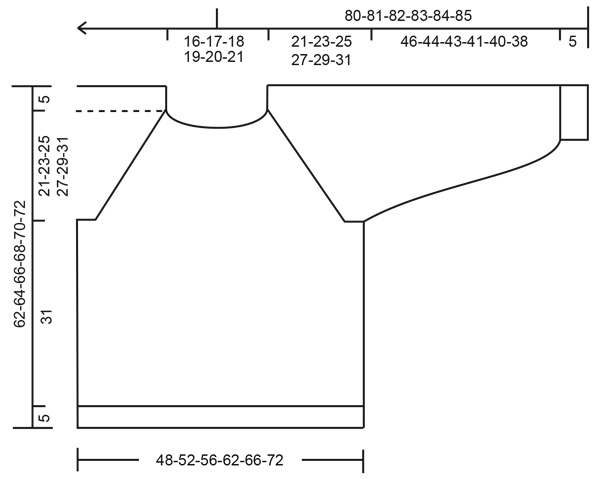 |
|||||||||||||||||||||||||||||||
Have you finished this pattern?Tag your pictures with #dropspattern #iceislandsweater or submit them to the #dropsfan gallery. Do you need help with this pattern?You'll find 28 tutorial videos, a Comments/Questions area and more by visiting the pattern on garnstudio.com. © 1982-2025 DROPS Design A/S. We reserve all rights. This document, including all its sub-sections, has copyrights. Read more about what you can do with our patterns at the bottom of each pattern on our site. |
|||||||||||||||||||||||||||||||








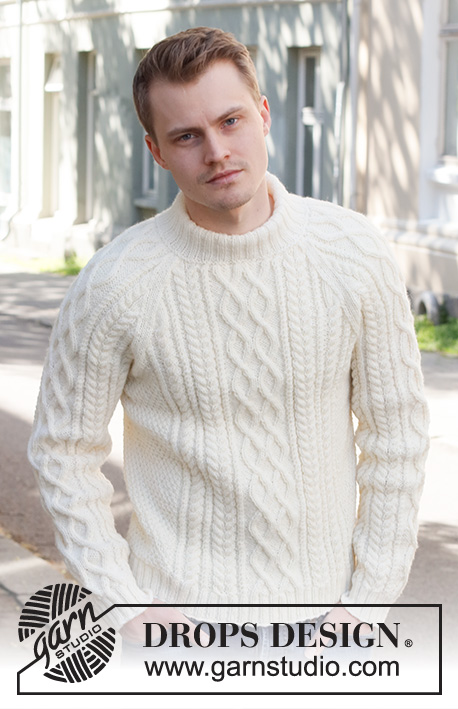
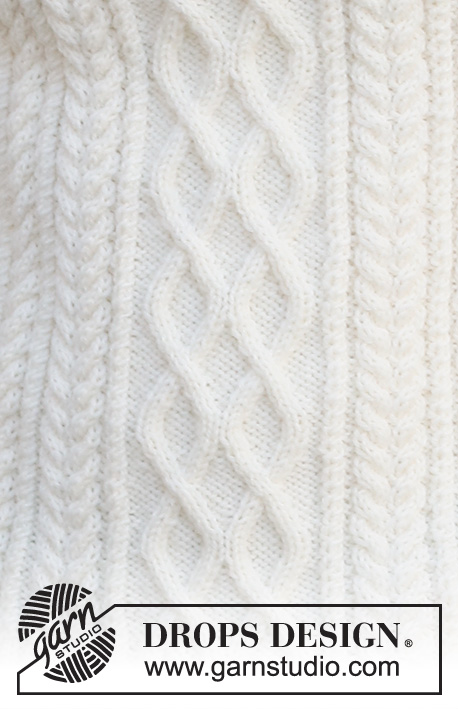


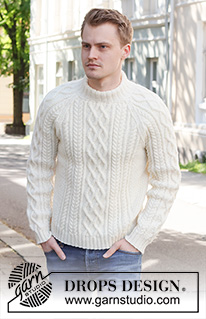

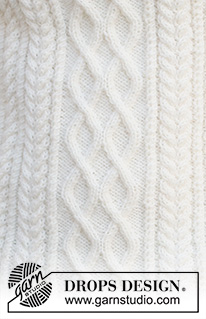

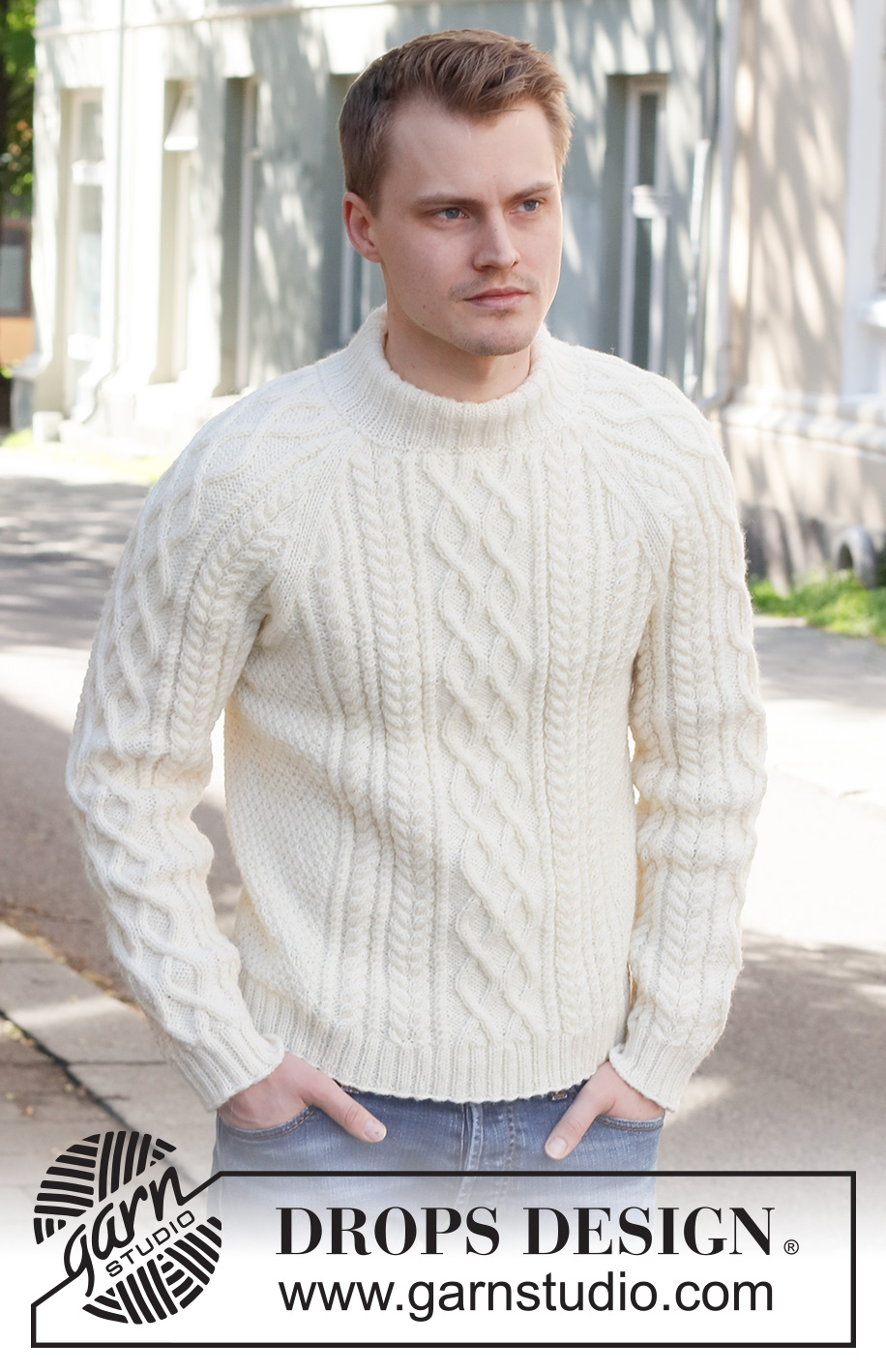
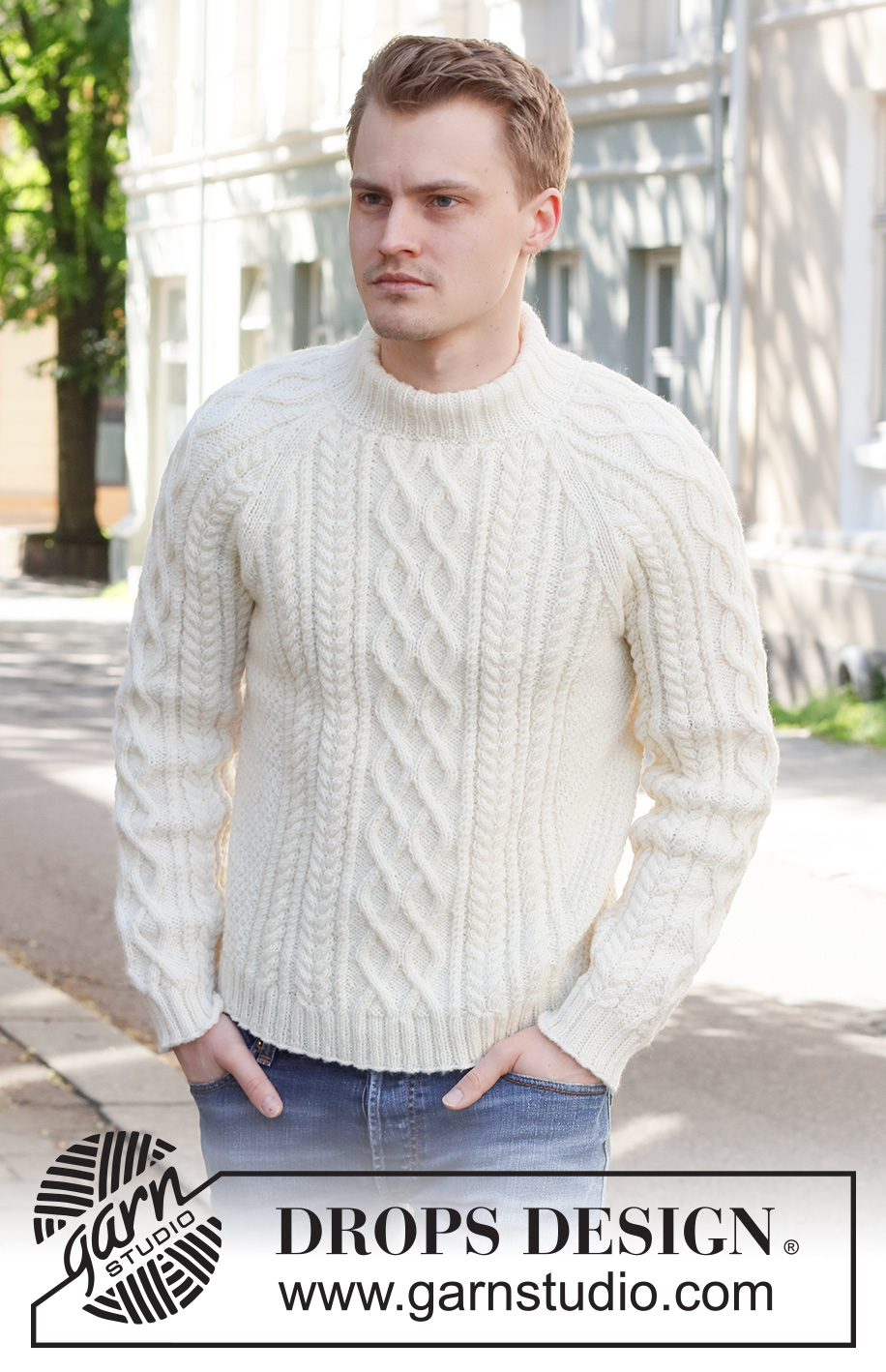
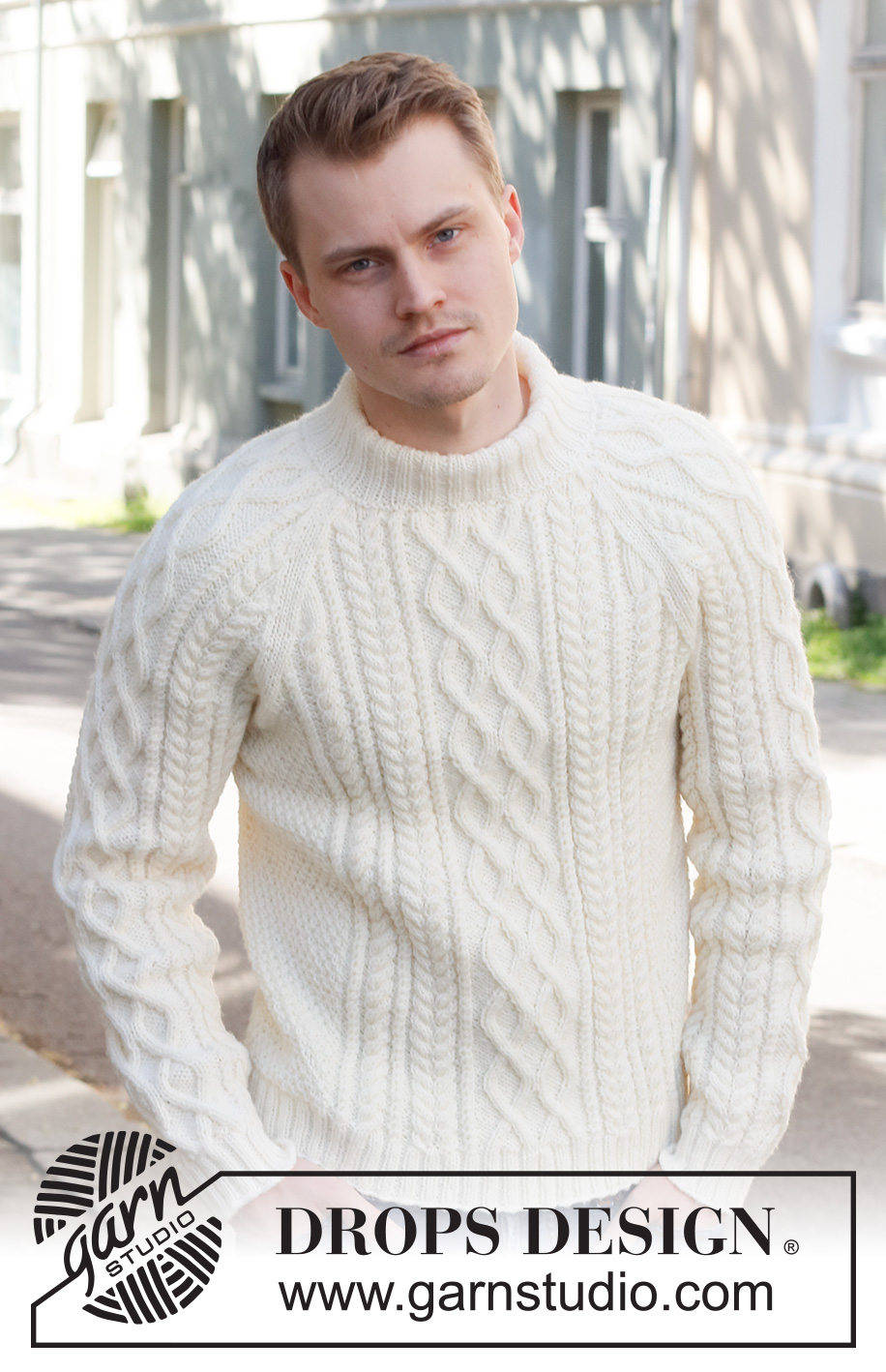
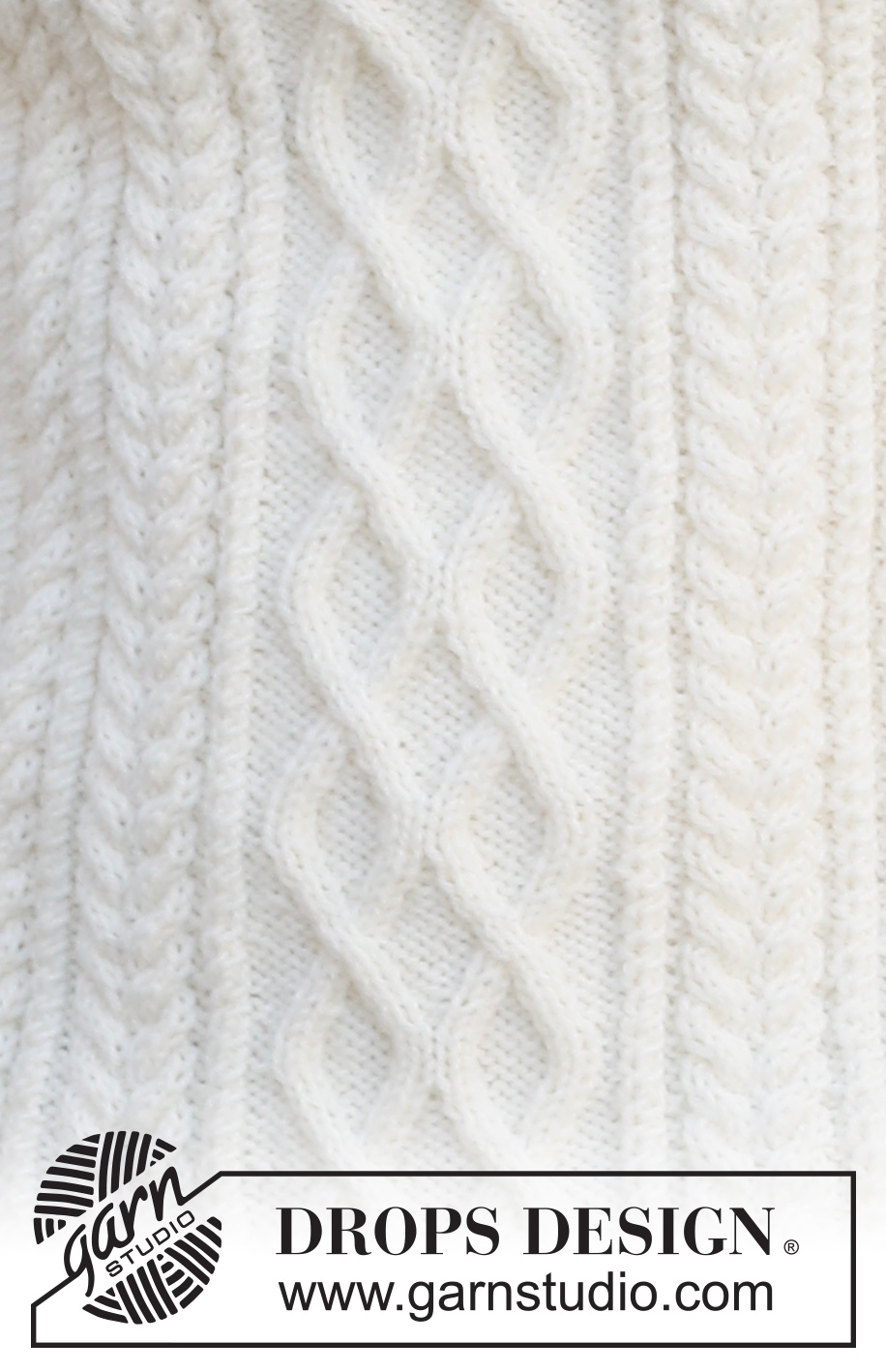



























































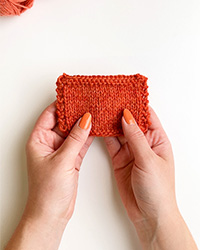
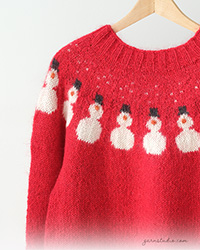

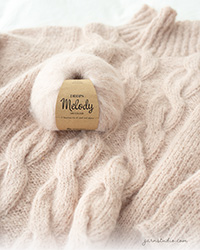
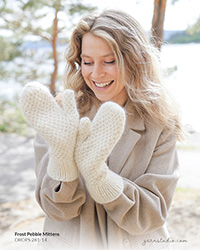

Post a comment to pattern DROPS 224-10
We would love to hear what you have to say about this pattern!
If you want to leave a question, please make sure you select the correct category in the form below, to speed up the answering process. Required fields are marked *.